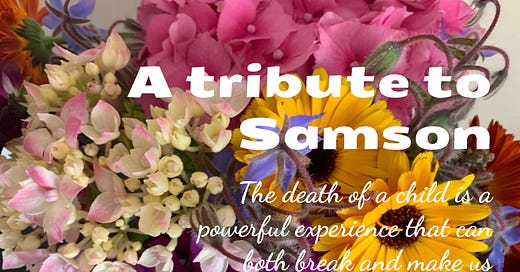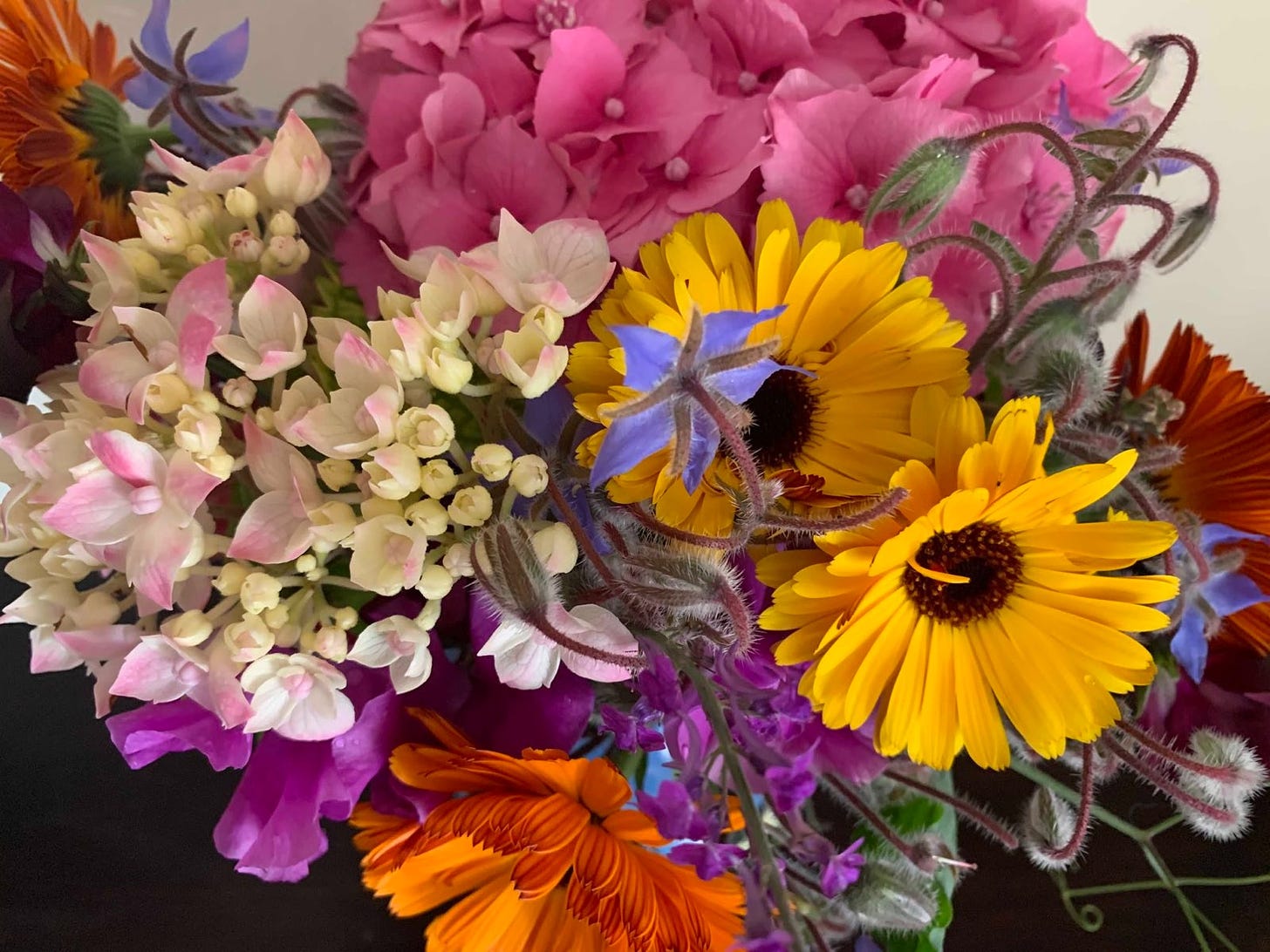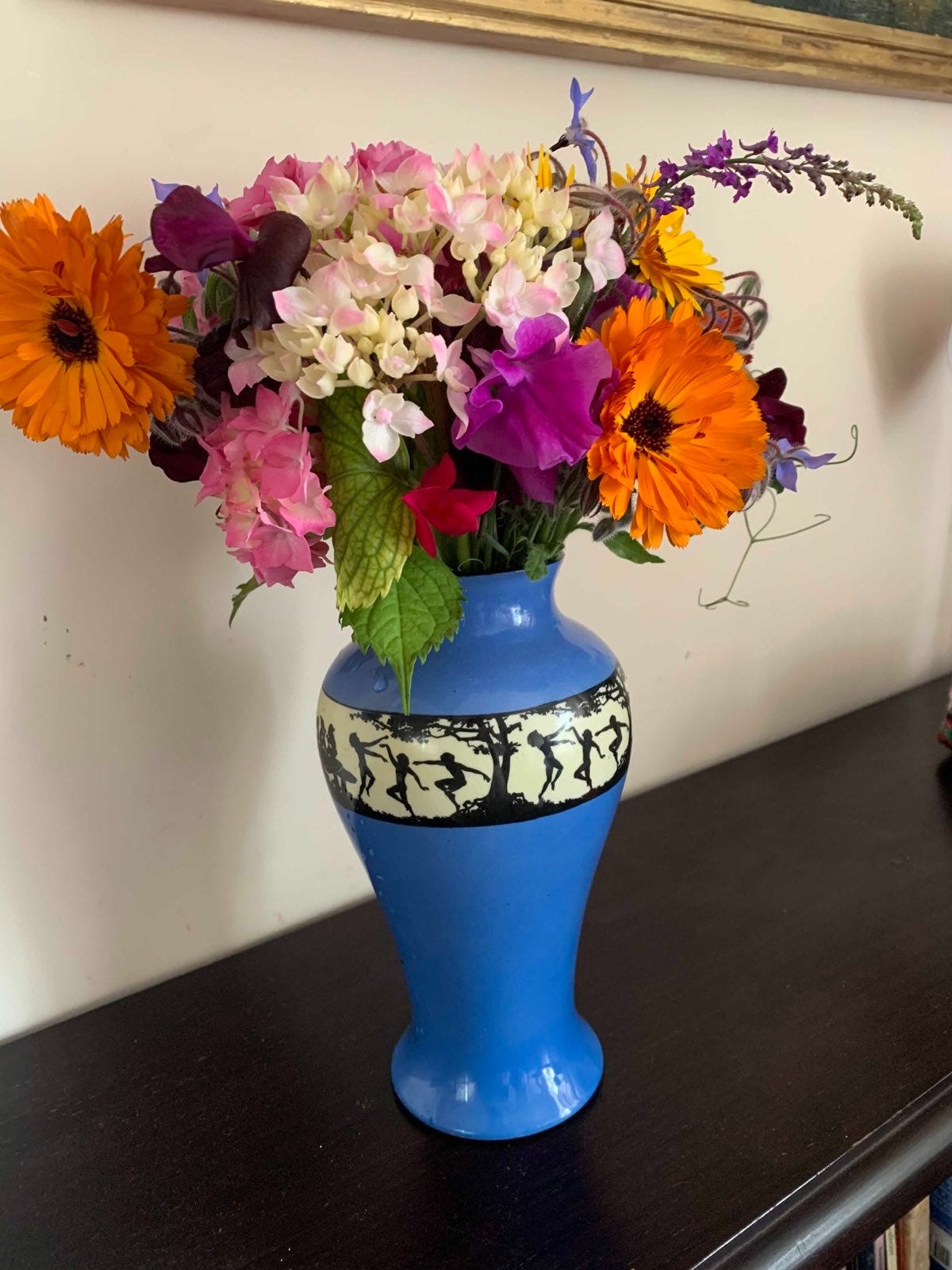A tribute to Samson
The death of a child is a powerful experience that can both break and make us
Flowers from my garden today!
I was 28 years old when my first baby Samson died, the same age he would now be had he survived neonatal meningitis. From this traumatic experience, I vowed I would manifest something positive and good. Yet in the aftermath of deep despair and self-reflection, I could not imagine what that positive and good thing could be.
In 1995, I was a registrar in Obstetrics at Baragwanath Hospital in Soweto, Johannesburg, when it happened. At the time, my raison d’etre as a young female doctor was to help women have the best birth experience possible, and to save as many women and babies as possible. This, in the anti-human context of apartheid in the busiest hospital in Africa was a challenge indeed.
At 36 weeks’ pregnant during my last night shift before Samson’s birth, with a big belly and swollen hand and ankles, I delivered 11 women healthy babies by caesarean section in the 16 hours between 4pm and 8am. My own beautiful baby boy was born three days after this shift and died three days later. Leaving the maternity home with empty arms and a broken heart, I did not think I would survive this experience. Amidst the pain and confusion, many unanswerable questions arose.
Why had this happened to me when I worked so hard to help others? Why could I save other babies and not save my own? Why was life so unfair? Was I not worthy of a healthy baby too? Was it my fault somehow?
Our modern lifestyle meant we lived far from family elders, their unconditional support and old-fashioned wisdom. So, you may be surprised to hear that a week later, still stunned and confused by what had happened to us, my husband and I agreed to be despatched to Mauritius on a week’s holiday. Engendered by the material culture in which we were embedded, such was the prevailing wisdom of our well-meaning but inexperienced peers. A holiday in the sun would help us get over our pain and loss.
For a week I lay in the shade fully clothed and covered from head to toe under a cotton sarong not wishing to be there, not wishing to exist at all quite frankly, let alone be on a remote and romantic island far from home and filled with happy honeymooners.
Upon our return home, the pain of Samson’s loss demanded its right to be explored. However, my grief struggled to find accommodation in an atomised, time and money-based existence, full of expectations, entitlement and obligations, and disconnected from family elders wisdom, love and support.
Two weeks after Samson’s death, I was prescribed paroxetine (a Selective Seratonin Reuptake Inhibitor (SSRI) prescribed for depression) “to take the edge off”, to help me “get back to normal”, “forget what had happened”, and to get back to work. (SSRIs continue to be the medical profession’s answer to uncomfortable emotions.)
After being numbed by this drug for six months and at many times feeling that life was simply not worth living, I gave myself a choice:
Either, I could continue using this mind-numbing drug, in which case I may as well cease to exist, take a big leap off Cape Town’s Table Mountain and call it a day – or, I could stop trying to cover over the widening crack in my world view, go to the very bottom of the abyss, and work my way out.
Thankfully I chose the latter.
So, it was six months after the death of my son that my grieving process began in earnest and where, immersed in the darkness amidst anger and betrayal, self-doubt and loathing, disappointment and hopelessness, I allowed myself to break and then, slowly, to be re-shaped.
What the death of Samson taught me…
Pain is an opportunity, take it personally.
With most challenges in life, you don’t want to “take the edge off” with so-called anti-depressants or anxiolytics (drugs that seek to reduce anxiety). Uncomfortable emotions, pain and anxiety, are signposts to the work that needs to be done to become more fulfilled and functional versions of ourselves. Traumatic life events like this provide an opportunity to review one’s values, choices, spiritual disposition, and material circumstances, and potentially to change.
In addition, if we are up for the challenge, and choose to feel the pain and not to be numbed, the death of a child demands that we investigate the very fundamental assumptions about our reality and our role within it. It is an opportunity for deep reflection on the meaning of life and an invitation to join the quest for truth.
Why did this experience happen? What can be learnt from it? How does it change my beliefs? Does it change who I am? If so, how? Why did God let this happen? Can anything good come from this?
The purpose of such questioning is not to attribute blame, but rather to challenge fundamental assumptions about our reality. Going to the very heart of the pain gives one a unique perspective on the world and provides potential for tremendous personal growth.
In bearing that which feels unbearable, we are gifted the opportunity to refresh and rebirth our human spirit.
Transmuting grief into peace and purpose does not happen overnight and calls for perseverance, courage and compassion for ourselves. This is how our human spirit triumphs over these most difficult of circumstances. Indeed, I have learnt it is this triumph over darkness that is the essence of what it means to be human.
The death of a child is a very powerful experience that both breaks us and makes us. By using it as an opportunity to clear out what no longer serves us and embarking on a truth-seeking quest, we can re-discover the wonder of living life consciously and with purpose.
Twenty-eight years ago, I now know I had a lot to learn. Therefore, it is with gratitude that I can appreciate Samson’s death was not in vain. To the contrary, publishing this a week before what would have been his 29th birthday, I am satisfied that his short time on earth was deeply meaningful. A work in progress, he is part and parcel of who I am becoming.
Please help support our work!
If you enjoy reading my Substack articles and have the means, please consider becoming a paid subscriber. All proceeds go to the work of the World Council for Health. You can either:
Give a gift subscription
Donate Subscriptions
Give directly to World Council for Health
Can’t donate but would like to contribute? We are always looking for volunteers, so please do get in touch!






The way in which you share your experiences, your world...it's powerful and moving. Your eloquence and grace is balm for my soul. Thank you for sharing.
At the heart of courage, love, and joy, you will find a kernel of pain from which those gifts blossomed.
Before the age of thirteen, Martin Luther King Jr. twice attempted suicide, and Buckminster Fuller discovered the purpose of his life as he stood on a cliff overlooking Lake Michigan at the age of thirty-two:
“In committing suicide, I seemingly would never again have to feel the pain and mortification of my failures and errors, but the only-by-experience-winnable inventory of knowledge that I had accrued would also be forever lost — an inventory of information that, if I did not commit suicide, might prove to be of critical advantage to others, possibly to all others, possibly to Universe.”
Stepping back from the cliff’s edge, he concluded:
“If I take oath never again to work for my own advantaging and to work only for all others for whom my experience-gained knowledge may be of benefit, I may be justified in not throwing myself away. This will, of course, mean that I will not be able to escape the pain and mortification of being an absolute failure in playing the game of life as it has been taught to me.” (https://medium.com/@bbirdwell4711/why-buckminster-fuller-is-more-interesting-than-you-thought-f9d213eb0cb7)
Thank you for introducing us to your precious Samson, Tess. You could not have done him prouder.